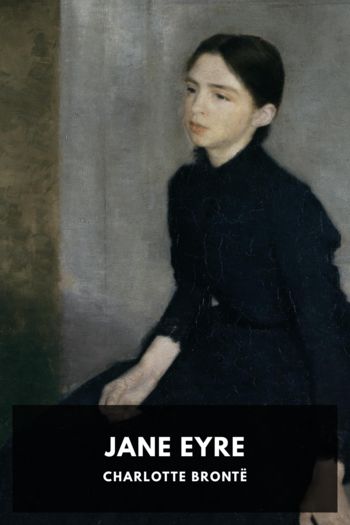Jane Eyre by Charlotte Brontë (black female authors .txt) 📕

Description
Jane Eyre experienced abuse at a young age, not only from her aunt—who raised her after both her parents died—but also from the headmaster of Lowood Institution, where she is sent away to. After ten years of living and teaching at Lowood Jane decides she is ready to see more of the world and takes a position as a governess at Thornfield Hall. Jane later meets the mysterious master of Thornfield Hall, Mr. Rochester, and becomes drawn to him.
Charlotte Brontë published Jane Eyre: An Autobiography on October 16th 1847 using the pen name “Currer Bell.” The novel is known for revolutionizing prose fiction, and is considered to be ahead of its time because of how it deals with topics of class, religion, and feminism.
Read free book «Jane Eyre by Charlotte Brontë (black female authors .txt) 📕» - read online or download for free at americanlibrarybooks.com
- Author: Charlotte Brontë
Read book online «Jane Eyre by Charlotte Brontë (black female authors .txt) 📕». Author - Charlotte Brontë
She was getting much excited. “I think I had better leave her now,” said I to Bessie, who stood on the other side of the bed.
“Perhaps you had, Miss: but she often talks in this way towards night—in the morning she is calmer.”
I rose. “Stop!” exclaimed Mrs. Reed, “there is another thing I wished to say. He threatens me—he continually threatens me with his own death, or mine: and I dream sometimes that I see him laid out with a great wound in his throat, or with a swollen and blackened face. I am come to a strange pass: I have heavy troubles. What is to be done? How is the money to be had?”
Bessie now endeavoured to persuade her to take a sedative draught: she succeeded with difficulty. Soon after, Mrs. Reed grew more composed, and sank into a dozing state. I then left her.
More than ten days elapsed before I had again any conversation with her. She continued either delirious or lethargic; and the doctor forbade everything which could painfully excite her. Meantime, I got on as well as I could with Georgiana and Eliza. They were very cold, indeed, at first. Eliza would sit half the day sewing, reading, or writing, and scarcely utter a word either to me or her sister. Georgiana would chatter nonsense to her canary bird by the hour, and take no notice of me. But I was determined not to seem at a loss for occupation or amusement: I had brought my drawing materials with me, and they served me for both.
Provided with a case of pencils, and some sheets of paper, I used to take a seat apart from them, near the window, and busy myself in sketching fancy vignettes, representing any scene that happened momentarily to shape itself in the ever-shifting kaleidoscope of imagination: a glimpse of sea between two rocks; the rising moon, and a ship crossing its disk; a group of reeds and water-flags, and a naiad’s head, crowned with lotus-flowers, rising out of them; an elf sitting in a hedge-sparrow’s nest, under a wreath of hawthorn-bloom.
One morning I fell to sketching a face: what sort of a face it was to be, I did not care or know. I took a soft black pencil, gave it a broad point, and worked away. Soon I had traced on the paper a broad and prominent forehead and a square lower outline of visage: that contour gave me pleasure; my fingers proceeded actively to fill it with features. Strongly-marked horizontal eyebrows must be traced under that brow; then followed, naturally, a well-defined nose, with a straight ridge and full nostrils; then a flexible-looking mouth, by no means narrow; then a firm chin, with a decided cleft down the middle of it: of course, some black whiskers were wanted, and some jetty hair, tufted on the temples, and waved above the forehead. Now for the eyes: I had left them to the last, because they required the most careful working. I drew them large; I shaped them well: the eyelashes I traced long and sombre; the irids lustrous and large. “Good! but not quite the thing,” I thought, as I surveyed the effect: “they want more force and spirit;” and I wrought the shades blacker, that the lights might flash more brilliantly—a happy touch or two secured success. There, I had a friend’s face under my gaze; and what did it signify that those young ladies turned their backs on me? I looked at it; I smiled at the speaking likeness: I was absorbed and content.
“Is that a portrait of someone you know?” asked Eliza, who had approached me unnoticed. I responded that it was merely a fancy head, and hurried it beneath the other sheets. Of course, I lied: it was, in fact, a very faithful representation of Mr. Rochester. But what was that to her, or to anyone but myself? Georgiana also advanced to look. The other drawings pleased her much, but she called that “an ugly man.” They both seemed surprised at my skill. I offered to sketch their portraits; and each, in turn, sat for a pencil outline. Then Georgiana produced her album. I promised to contribute a watercolour drawing: this put her at once into good humour. She proposed a walk in the grounds.





Comments (0)